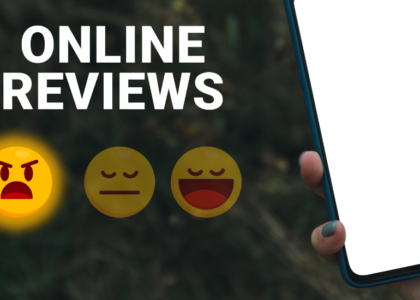What is Content Marketing?
Content marketing is a type of marketing that attracts customers by sharing valuable and relevant information. It involves creating and sharing content that solves your audience’s problems and answers their questions. When done right, content marketing helps your business grow by generating awareness and sales.
SMBs engage in content marketing to connect with their local community and wider online audiences. By focusing carefully on the content that brings the best results for them, they can lower their advertising costs. Smaller businesses can compete with big-name brands. Content quality is what counts. Well-produced, valuable content and a strong brand story can help you get noticed.
How Content Marketing Connects to Your Business
Online content marketing is like the fuel that powers all other areas of marketing in your business. This includes social media, advertising, public relations, and more.
SEO and content marketing
No marketer wants to pay for every single site visitor; it’s expensive! SEO (search engine optimization) helps you connect with your audience organically and directly through search results. It means you can potentially generate traffic for years to come without spending any additional money and resources. So, it’s super important to keep SEO in mind when planning website content marketing.
Social media marketing and content marketing
There’s no getting away from it: TikTok, Instagram, Twitter Mastodon, YouTube, and all the usual suspects are going to form a significant part of your marketing plan. But how does social media relate to content marketing?
Principally, for businesses, social media channels offer a way to build communities around a shared interest. That interest might be your brand or a hobby, for example. Social sites are therefore an excellent place to distribute your content. From there, you can drive traffic to your website. At the same time, these channels allow you to run ads. You can also experiment with content types, speaking directly to your clients and potential customers.
Advertising and content marketing
Content marketing is a dynamic teacher, full of information and encouragement. Advertising, on the other hand, is the creative cousin, always rushing to get your attention with flashy ideas. Content marketing aims to build a loyal audience and lay the groundwork for conversions. Advertising, in contrast, tries to catch the audience at their moment of greatest need. It points them directly toward the product or service in a promotional way. One of the biggest differences to note is that content marketing is inbound. It pulls people into your website, blog, and content.
Advertising, however, is outbound. It pushes your message to your target audience. In many cases, you will actually run ads to promote your content, too. This is a great way to get lots of eyes on your website. In other words, content also feeds your advertising machine!
7 Benefits of Content Marketing for Businesses
1. Attract and Grow Organic Traffic
Effective content marketing can help you connect with your target audience through social media, search, email, and other channels. Organic traffic is especially important because the people you attract with your content genuinely need your help. They come to you with a question, challenge, or need. You are right there to help with information or a product and service. For small businesses especially, it can bring visitors to your website, blog, or product pages. But most importantly, you don’t have to pay for their presence. Content marketing can help you compete with much bigger companies without having to spend thousands or even millions on Google ads.
2. Build Your Brand
Content marketing helps small businesses tell their stories and connect with the right audiences. A well-defined brand voice is like a personality that shines through your content. This makes it super important that your message is always clear and consistent. You should also establish the right tone in your writing. Small businesses, startups, and other organizations with smaller budgets can use content marketing to tell their story and build a community. This is true even if they’re in a small niche.
3. Engage Emotions
Businesses can seem cold and difficult to deal with. But you could wash away these perceptions by using content that puts a human face to your brand. This engages positive emotions and lets people connect with you on a more personal level. Overall, it helps show your brand as being trustworthy and credible.
This approach is particularly effective on social media where team members can show their faces on video, live streams, and images.
4. Find More Customers
When it comes to buying something online or contracting a service, people take their time. They go on what’s known as a “buyer’s journey.” This is where they search for, discover, and then choose solutions. There are multiple opportunities to engage with these consumers by providing well-considered and valuable information that answers their questions.
A website visitor is more likely to become a customer if they have been guided and informed by you.
5. Establish Expertise, Authority, and Trust
Content marketing lets you share insights, research, and knowledge. It helps set the stage for your business, establishing your status as a thought leader or go-to resource. When you establish trust and credibility, people are also more likely to see you as a valuable service provider.
Search engines like Google also see experience, expertise, authority, and trustworthiness (EEAT) as strong signals that your content is worth ranking.
6. Boost Your PR Efforts
Believe it or not, your content can be newsworthy, too. Journalists often use research to inform articles and write about the future of certain industries. A well-researched white paper (a resource with original research or expertise), for example, can lead to press. It can also encourage people to link to your website from theirs, boosting your SEO in the process.
7. Improve Your Product and Spot Opportunities
Sharing content on social media can lead to likes, shares, and comments. You’ll develop a better understanding of your audience, and it can help give direction for future content. Also, if you pay attention to reviews or criticism, you’ll spot ways to improve your product. You might even discover new market opportunities for your company.
Request your search audit
- Increase your conversion rate
- Reduce your bounce rate
- Increase your average order value
- Retain your online shoppers
Relevant Types of Content Marketing
Social media marketing
Brands use platforms like Instagram, TikTok, Telegram, Facebook, WeChat, Twitter—and any of the hundreds of other social media platforms out there.
These channels are used to connect to an audience via their interests, through groups and pages they follow.
It’s common to use a mix of organic (not paid for) content and sponsored content to build their communities.
Generally speaking, customer-facing brands like a social presence because they can interact with their customer base. Doing so, they can easily get feedback, share news, and promote new products.
Email marketing
Email marketing is another effective communication channel for content strategists. There are several ways to use it:
- Regular newsletters to maintain contact with an engaged mailing list, sharing news, updates, and practical tips
- One-off or seasonal emails to share targeted offers, discounts, or other more promotional content
- Course content: interactive content that people have signed up for, for professional development reasons
- Onboarding/training reasons: “drip” email campaigns are a set series of emails delivered at a predetermined cadence; often, the person receiving these types of mails has tasks to complete
Video content marketing
Video content is popular, effective (our research shows that 41% of survey respondents say video made their 2021 content strategy successful), and easy to consume.
Even better, it is suitable for a variety of channels—think YouTube, Instagram Reels, TikTok, etc.
Videos can be used to build awareness of a product, solve customer problems, highlight benefits, use cases, features, or simply share customer stories.
Blog posts and in-depth guides
Blog articles and guides are also very versatile content formats. They allow you to write content for different buyer personas, with different needs and different stages of the buying cycle.
When blogs are optimized for search engines, they also drive organic traffic for longer than social media posts and paid content.
Podcasts
Podcasts are a unique content format. They help people see behind the curtain and really get to know the people behind the brand. At the same time, they help you establish presence and share stories, insights, and even product features.
This content format is unique because it doesn’t require your audience’s full attention. For consumers, podcasts are super versatile. They are great to listen to during the drive home, while working, cleaning the house, or even at the gym!
If you do a good job, your podcast could become part of someone’s routine.
If you want to get started, listen to lots of podcasts. This will help you understand what works and what does not work so well. It will also help you settle on a style for your own content.
Infographics and Checklists
Infographics and checklists are highly visual, valuable tools for business to business (B2B) and business to consumer (B2C) brands. They get information across to the audience in a quick, pleasing way.
You can use both of these content formats in a number of ways:
- On social media to generate shares, click-throughs, and comments with infographics that resonate with your audience
- As gated content where you offer the resource in exchange for an email, which you can use to build a targeted mailing list of potential customers
- Or as linkbait. There’s no question, great infographics get shared. When including original infographics on your blog, be sure to include a logo and ask people to credit you with a link back to your article.
Gated content
Website visitors access gated content by supplying an email address or other information (name, phone number, etc.) to download a resource.
This content should offer added value to readers, making sure it’s worth sharing their personal information.
While this content has no SEO value (you can’t access it directly from the search results), there are several reasons you might want to use it. It lets you:
- Collect emails and build a mailing list
- Generate marketing-qualified leads (MQLs)
- Increase engagement and funnel people toward conversion
Free tools
Content marketers often use free tools that are related to their target audience’s needs and their own service offering. They are designed to attract visitors, generate backlinks, encourage users to share the service, and provide additional value for free.




